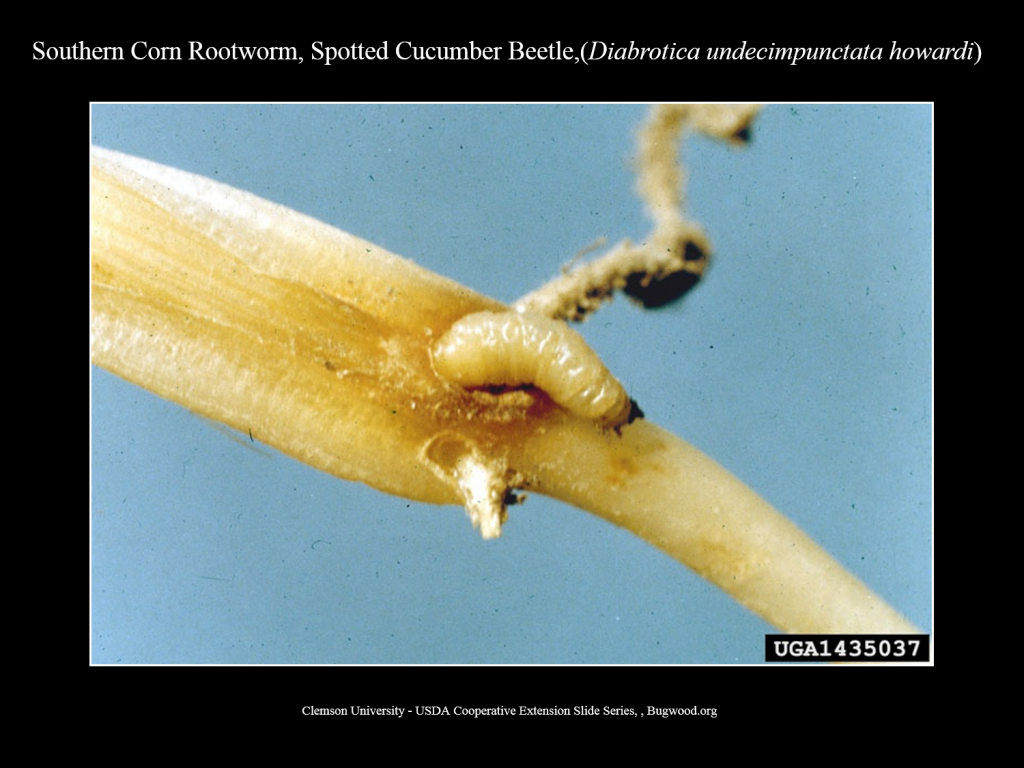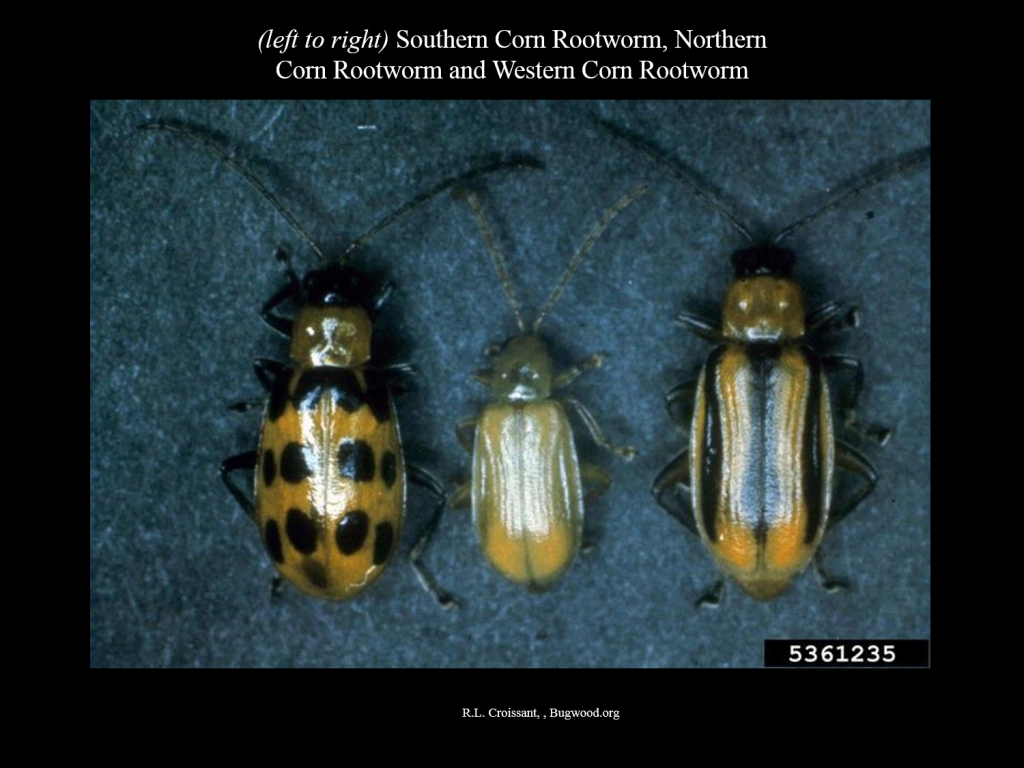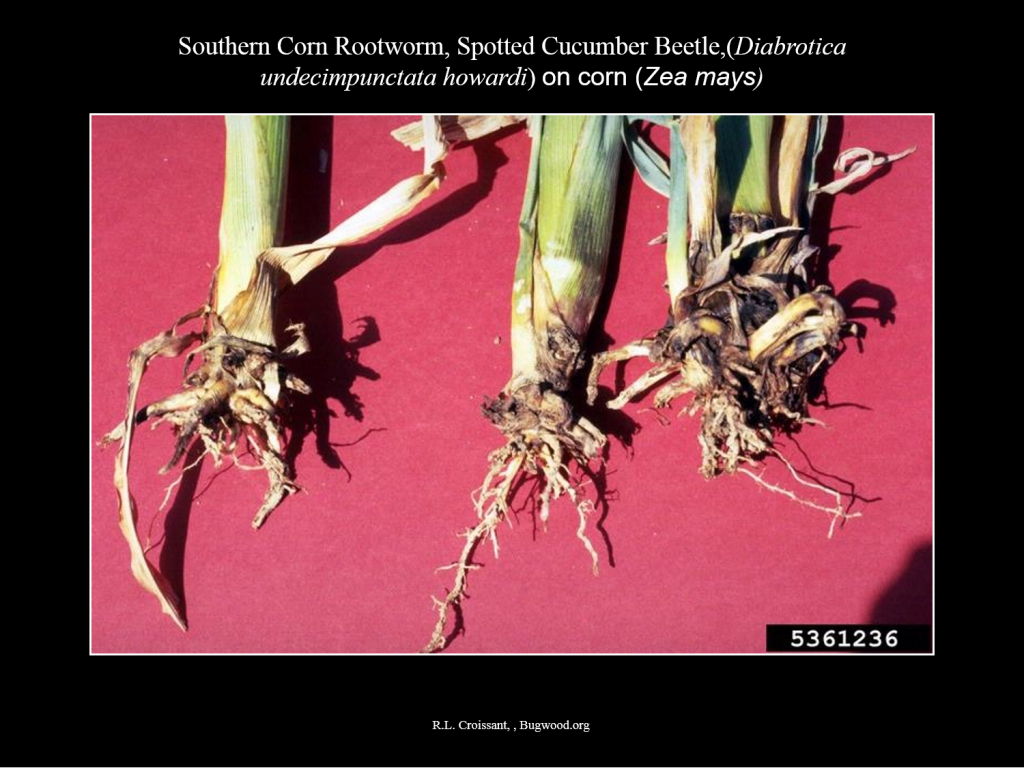Southern Corn Rootworm
go.ncsu.edu/readext?898269
en Español / em Português
El inglés es el idioma de control de esta página. En la medida en que haya algún conflicto entre la traducción al inglés y la traducción, el inglés prevalece.
Al hacer clic en el enlace de traducción se activa un servicio de traducción gratuito para convertir la página al español. Al igual que con cualquier traducción por Internet, la conversión no es sensible al contexto y puede que no traduzca el texto en su significado original. NC State Extension no garantiza la exactitud del texto traducido. Por favor, tenga en cuenta que algunas aplicaciones y/o servicios pueden no funcionar como se espera cuando se traducen.
Português
Inglês é o idioma de controle desta página. Na medida que haja algum conflito entre o texto original em Inglês e a tradução, o Inglês prevalece.
Ao clicar no link de tradução, um serviço gratuito de tradução será ativado para converter a página para o Português. Como em qualquer tradução pela internet, a conversão não é sensivel ao contexto e pode não ocorrer a tradução para o significado orginal. O serviço de Extensão da Carolina do Norte (NC State Extension) não garante a exatidão do texto traduzido. Por favor, observe que algumas funções ou serviços podem não funcionar como esperado após a tradução.
English
English is the controlling language of this page. To the extent there is any conflict between the English text and the translation, English controls.
Clicking on the translation link activates a free translation service to convert the page to Spanish. As with any Internet translation, the conversion is not context-sensitive and may not translate the text to its original meaning. NC State Extension does not guarantee the accuracy of the translated text. Please note that some applications and/or services may not function as expected when translated.
Collapse ▲Southern corn rootworm larvae injure seedlings by feeding between the newly forming roots and into the meristem tissue. Feeding will usually appear as a small, fine puncture between the roots. Seedlings injured by this pest usually die but may be stunted and show sucker growth. See scouting guidelines for seedling pests. This insect may have up to two generations a year in corn but the first generation larvae usually originate from eggs laid into spring vegetation before the corn is planted. Since tillage destroys these early larvae damage to corn seedlings is mostly restricted to conservation tillage corn, particularly no-tillage. The second generation infests corn in the whorl stage and feeds on roots. In general the root mass of corn plants will sustain this injury without effect on yield. However, where peanuts (an alternate host) are grown in rotation with corn very high second generation populations may infrequently damage corn.
Southern corn rootworm should not be confused with western and northern corn rootworms since the seasonal biology and host range of these insects are quite different (see Western and northern corn rootworms).
Southern corn rootworm is one member of a complex of soil dwelling insects that attack germinating seed and seedlings (along with wireworms and seed corn maggot). Populations may be reduced by early burn-down of weeds (e.g. 3 to 4 weeks in advance of planting). An at-planting soil insecticide may be used in situations where conditions (especially no-tillage into heavy vegetation) or field history indicates a high probability for this pest. Some Bt proteins effectively control this insect.





